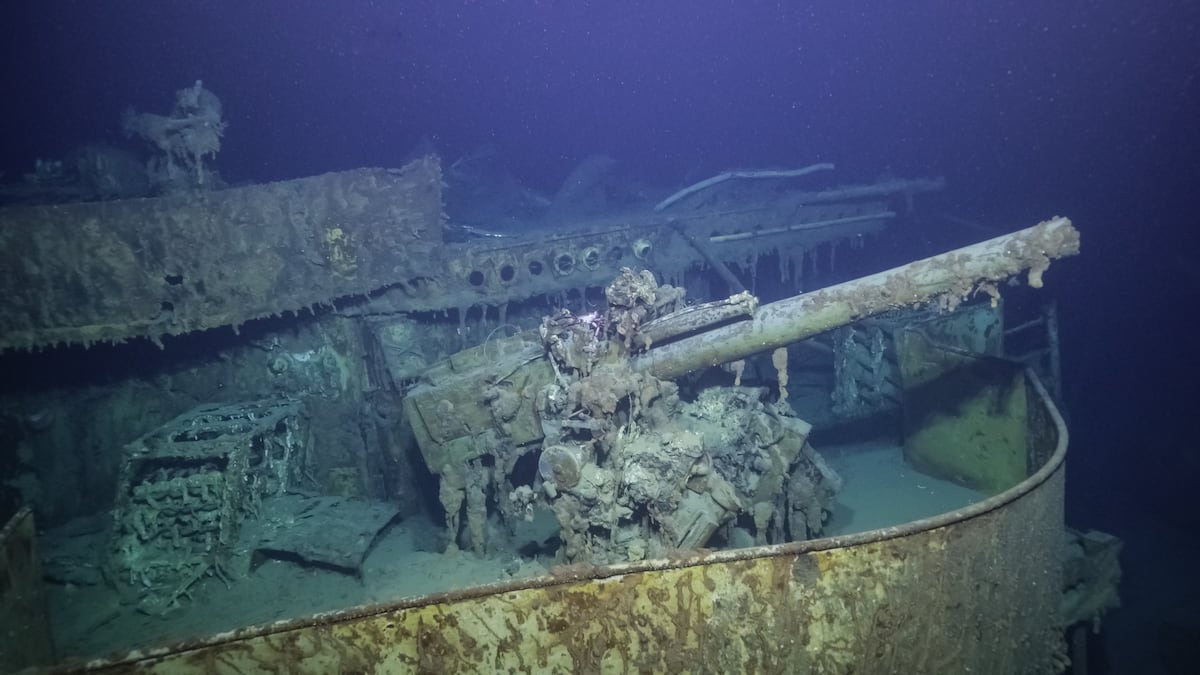From July 2 to 23, audiences will be able to embark on a rare, real-time exploration of the watery graves that tell the tale of the naval battles that spelled the difference between victory and defeat for the United States in the Pacific War.
Broadcast from Nautilus Live, the Exploration Vessel Nautilus and its team will map the shipwrecks of Ironbottom Sound during the Maritime History of Guadalcanal expedition (NA173). For three weeks, the team, led by preeminent explorer Dr. Robert Ballard, will explore the infamous waters surrounding the Solomon Islands using their remotely operated vehicles alongside the mapping capabilities of USV DriX — the University of New Hampshire’s uncrewed surface vessel.
“Today,” writes the Nautilus Live Ocean Exploration Trust blog, “the wrecks still lie beneath the waves between Savo Island and Guadalcanal, silent witnesses to a fight that marked a turning point in the war that continues to impact the modern Pacific.”
Savo Island
Nearly two days after the Allied landings on Guadalcanal — which would come to see American planes ruling “The Slot” and Ironbottom Sound off Guadalcanal by day, but Japanese ships dominating them by night — the Imperial Japanese Navy undertook a devastating night surface attack against the Allied ships screening the offloading Allied troops.
During the night of Aug. 8, 1942, into the wee morning hours of Aug. 9, a Japanese flotilla consisting of a destroyer, five heavy cruisers and two light cruisers managed to penetrate the Allied defensive perimeter. In a sneak attack lasting just under an hour, the Japanese forces sank four heavy cruisers: the Quincy, Vincennes, Astoria and HMAS Canberra, along with damage to other Allied vessels. More than 1,500 seamen perished during the opening salvo of what would become a months-long struggle for the land, seas and skies surrounding Guadalcanal.
To date, the Battle of Savo Island is deemed the worst defeat in a single fleet action suffered by the U.S. Navy, save Pearl Harbor. The battle, according to Nautilus, “prompted the U.S. Navy to re-evaluate its tactics, leading to improvements in radar use, training, and night combat readiness.”
The loss was so staggering that the watery gates to Guadalcanal gained its infamous nickname of “Ironbottom Sound” for the ships left to rust on the seafloor for all of time.
Now, thanks to the NA173 expedition, historians and laymen will get a window into the naval battles the shaped the Pacific, following along in real-time as the team examines the wrecks of the likes of the Vincennes — a veteran of both the Doolittle Raid and the Battle of Midway — and the HMAS Canberra, through the team’s noninvasive archaeological surveys.
“The battlefield is on a seabed shallower than 1,400 meters [4,593 feet] but lacks high-resolution mapping coverage,” according to Nautilus. “To date, only 30 of the military ships lost in this area have been located, with at least 21 remaining to be found in the deep waters of Ironbottom Sound.”
Nautilus is on a mission to change that.
Claire Barrett is the Strategic Operations Editor for Sightline Media and a World War II researcher with an unparalleled affinity for Sir Winston Churchill and Michigan football.
Read the full article here


